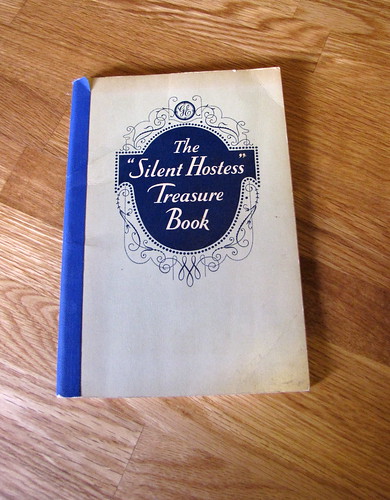Buy an Electric Refrigerator
(From 1926, it says, but it shows an early Monitor Top fridge interior, so perhaps it’s a year or so later.)
Once you’ve bought your electric fridge, you’ll be able to make recipes like this one, from the 1930 GE cookbook The “Silent Hostess” Treasure Book:
Chocolate Ice Cream
- 1 1/2 oz. unsweetened chocolate (1 1/2 squares)
- 2 cups rich milk*
- 1 tablespoon cornstarch
- 2/3 cup sugar
- 1 1/2 teaspoons vanilla
- 1 cup cream
- Few grains salt
Melt chocolate and add scalded milk very slowly. Mix cornstarch with sugar and add to chocolate mixture. Cook ten minutes, stirring until thickened. Cool, add vanilla, turn into tray of Super-freezer, and freeze to mush. Fold in whipped cream and return to Super-freezer until proper consistency to serve.
(*”Rich milk” is essentially what we now call “half and half”.)


